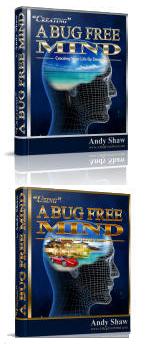The article below was written by Paul Mitchell, my Karate Sensei and Tai Chi teacher. It’s a brilliant insight into the mental approach to your training whatever your style. Paul has always had a very practical approach to martial arts and teaches for real self defence, not just scoring points. Having said that, he is also a great believer that martial arts are a great form of self development. Practical streetwise martial arts (“Jutsu”) and self development (“Do”) do not need to be separated. In fact they each works best with elements of the other blended together.
The article below was written for the Lotus Nei Gong (Tai Chi association) newsletter, so it is primarily from the Tai Chi perspective. That said, it can just as well apply to any martial art.
To see more article from Paul and other members of Lotus Nei Gong, CLICK HERE. Anyway, over to Paul’s article:
Really, this article is just a few rambling thoughts of a martial artist that has trained daily for 30 years and yet still calls himself a beginner.
In Japanese martial arts there is a saying that came from someone who truly understood the martial way: Keep a beginners mind. Sounds easy enough but remember a beginner is always ready to take advice and is always enthusiastic. Day in day out, week in week out, year in year out and decade after decade to jeep training with this concept in mind may not always be so easy.
Then of course we have to look at that concept of ‘following the martial way’. To a non-follower of the way it would seem quite likely that to train daily in a martial art, studying the philosophy and practice of combat would cause a person to become aggressive and confrontational. The truth is that (if studied correctly) martial arts make a person peaceful and well-rounded. The only true fight is internal, the war is against your ‘inner demons’ and lets be honest with ourselves, we all have some of those.
My favourite martial saying is: The fist and Zen are one. Still makes me smile, still just a beginner.
I sometimes say to my students that the only reason we have wars is because the world is run by ‘white belts’. If one truly understands conflict then one avoids it at all costs.
Up until this point I have not distinguished between external and internal martial arts. To me they completely compliment each other, they are indeed two sides of the same coin. Many people studying the martial arts refer to themselves in terms of one art: I am a karate practitioner, I am a Taijiquan practitioner etc. To me there are only martial arts, not styles. Although I have my core systems of Yang Taijiquan and Shotokan Karate I simply think of myself as a martial artist. To limit oneself in any other way seems to contradict the term ‘art’. An artist by my way of thinking should be a free thinking, free flowing, freedom loving individual. To limit the art is to stunt our personal growth in free flow.
I loved the article written by my dear friend Neil Lodge (editors note, see September 2010 newsletter) where he stated that he found Taijiquan so uplifting because it emphasised principles other styles simply touched upon. Principles such as meditation, breath control and Dan Tien rotation. I agree wholeheartedly and reading it made me once again…feel like a beginner.
I have currently studied Karate for 30 years and Taijiquan for half of this time. Although I love both arts I recognise that for me, Taijiquan starts where Karate left off…From the beginning in ‘external styles’ we are taught to be substantial. This means that you study to be strong and forceful. You train to become fast and strong, both physically and mentally. This can be painful, has its moments, but if done slowly, gradually and correctly this process is surprisingly enjoyable! As one progresses through the grades to brown and eventually black belt/sash the martial artist (as this is what the student is training to become) practices more technical, more subtle techniques which aim to make him more ‘insubstantial’. Instead of meeting force with force an advanced practitioner aims to deflect and neutralise incoming force. Eventually it becomes very difficult for anybody but other experienced martial artists to lay a hand upon you. Some good advice is to always assume your opponent has a knife. Good advice I feel as it helps to reinforce the idea of being insubstantial and avoiding an incoming force. This is the point in a persons training where Taijiquan needs to enter their martial path.
Every practice in Taijiquan and its related exercises in Qi Gong and Nei Gong, pushing hands and other two man drills is designed to help the martial artist become more insubstantial. Over time one learns how to lessen the use of their external force (generated by muscular power) and begin to use their internal power which, I feel, is such a complex subject that it warrants several more articles on this subject alone!
Obviously, as practitioners of Taijiquan our study is not just related to martial arts in their narrow sense but the study of conflict on every level. Realisation of this makes approaching resolution of fighting (literal, internal and cosmic) anything but narrow.
Final words of advice from this rambling beginner…Keep practicing…
Paul and his son, Damo, regularly host weekend courses in Somerset and Wales. If you would be interested in attending any then checkout the website for times, places and course subject.



